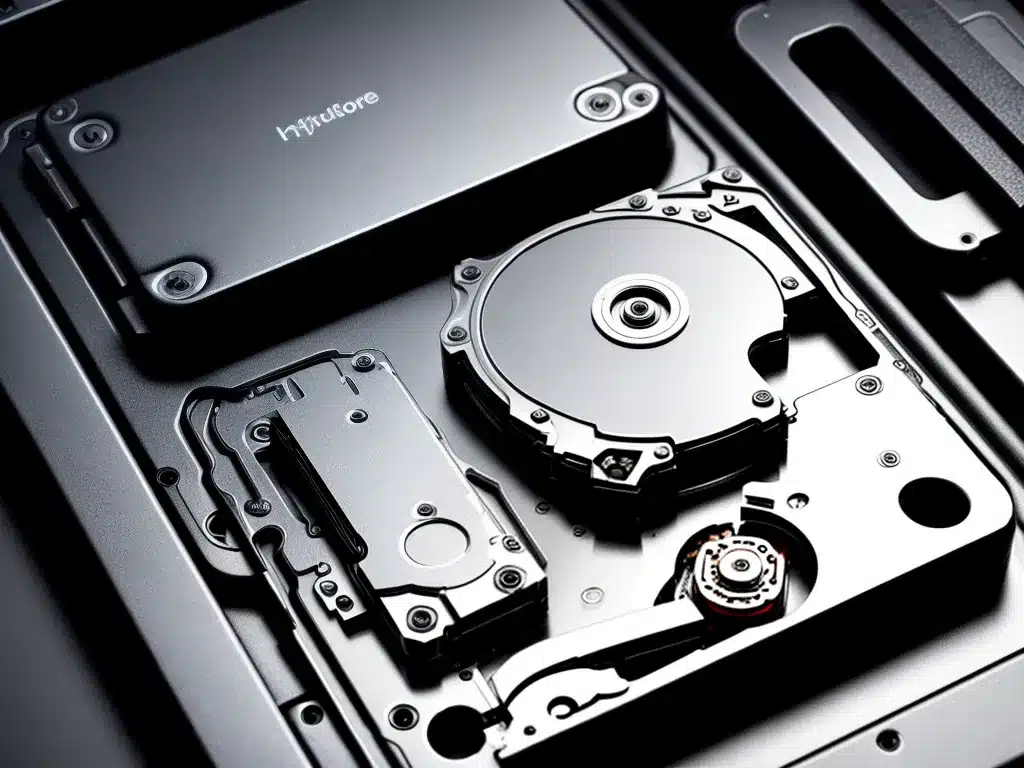
An Overview of Encrypted Drives and Data Recovery
Encrypted drives are storage devices that utilize encryption to lock and protect the data stored on them. This prevents unauthorized access in case the drive is lost or stolen. However, it also means that if the encryption keys are lost, the data becomes inaccessible. Data recovery from encrypted drives can be challenging, but is possible in some cases.
There are a few factors that determine the chances of recovering lost data from an encrypted drive:
- The encryption algorithm used – Some algorithms like AES are very secure and make data recovery much harder. Older algorithms may have vulnerabilities that can be exploited.
- The strength of the encryption key – Long and complex keys are harder to crack. Short or weak keys can potentially be brute forced.
- Whether the encryption keys are available – Possessing the original encryption keys makes recovery easiest. Without keys, more advanced techniques are required.
- The encrypted drive’s physical condition – Damaged drives with failed components have lower recovery chances. A drive in good health improves the odds.
Under the right conditions, experts utilize methods like brute-force decryption, decryption exploits, and chip-off forensics to recover data. But there are no guarantees, and results vary on a case-by-case basis.
Brute Force Decryption Attempts of Encrypted Drives
One way to recover data from an encrypted drive with an unknown password is to simply try cracking the password via brute force decryption attempts. This involves trying every possible password combination until the correct key is found.
The feasibility of a brute force attack depends largely on the encryption key’s complexity and length. Short or weak passwords with minimal complexity may be cracked in hours or days. But longer, more randomized keys can take years or even decades to exhaustively test all combinations.
Special hardware rigs with massive parallel processing capabilities are used to accelerate brute force decryption. The use of tactics like dictionary attacks, rainbow tables, and hybrid attacks can also optimize the password search. But well-secured encryption still requires an impractical amount of time and computing power.
Overall, brute force attacks only tend to succeed on older or weakly secured encryption. Modern encryption algorithms like AES-256 with sufficiently long keys remain practically impervious to brute forcing with current technology.
Exploiting Vulnerabilities in Encryption Algorithms
Since brute-force decryption is unfeasible for strong encryption, data recovery experts may attempt to exploit vulnerabilities in the encryption algorithm itself. Like any software code, encryption algorithms can contain flaws that compromise their security.
For example, vulnerabilities have been discovered over the years in algorithms like DES, 3DES, RC4, and others. These allow cryptanalysis attacks that can deduce encryption keys by analyzing ciphertexts.
Of course, reputable algorithms like AES are continuously vetted by the crypto community and designed to resist such exploits. So this method only tends to work on outdated or homemade encryption schemes with verifiable bugs.
Open source encryption software can also be reverse engineered to uncover flaws. Closed source proprietary encryption is harder to analyze but could also potentially have undiscovered defects.
Overall, while weaknesses undoubtedly exist in some encryption products, DO NOT take an article like this as encouragement to go hacking encryption! Strong security SW prevails.
Physically Removing and Reading Encrypted Memory Chips
In cases where encryption keys are completely unavailable, data recovery experts can employ chip-off forensics to physically extract and read flash memory chips from encrypted drives.
The approach involves carefully desoldering the memory chips from the printed circuit board and using specialized interfaces to read their raw contents. The data is still encrypted, but with the chip removed, much lower level analysis and decryption can be attempted.
Expensive lab equipment like scanning electron microscopes combined with advanced software can be used to manipulate the encrypted flash memory contents. The lack of tamper protection gives more flexibility than if the chips were still within a secure storage device.
This approach works best for recovering data from damaged encrypted devices where the circuit board is accessible but onboard encryption chips remain functional. It is very costly and has no guarantees, but can sometimes recover data when all else fails.
As always, appropriate legal authorization is a must when performingchip-off forensics!
Mitigating Total Data Loss on Encrypted Drives
While lost data recovery from encrypted drives is never assured, you can take steps to improve your chances should encryption keys become unavailable:
- Use encryption software from reputable providers – Avoid untested or homebrew encryption which may have defects.
- Make strong but memorable encryption keys – Long and complex enough to resist brute forcing but easy for you to remember.
- Back up keys securely in multiple locations – e.g externally on USB drives, printouts in secure places, password manager, etc.
- Store drives properly when not in use – Protect them from physical damage which makes recovery much harder.
- Keep software up to date – To ensure you have the latest security patches and key features.
Following best practices for utilizing encryption reduces the risk of data becoming stranded behind lost keys. Just be sure to backup those keys – without them your options are very limited!












